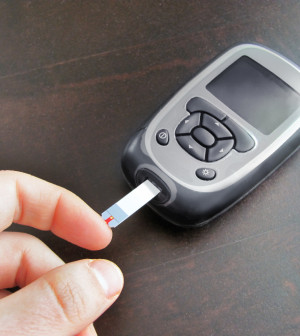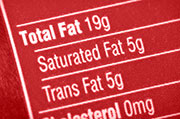- Double Mastectomy May Offer No Survival Benefit to Women With Breast Cancer
- Toxic Lead Found in Cinnamon Product, FDA Says
- Certain Abbott Blood Sugar Monitors May Give Incorrect Readings
- Athletes Can Expect High Ozone, Pollen Counts for Paris Olympics
- Fake Oxycontin Pills Widespread and Potentially Deadly: Report
- Shingles Vaccine Could Lower Dementia Risk
- Your Odds for Accidental Gun Death Rise Greatly in Certain States
- Kids From Poorer Families Less Likely to Survive Cancer
- Tough Workouts Won’t Trigger Cardiac Arrest in Folks With Long QT Syndrome
- At-Home Colon Cancer Test Can Save Lives
FDA Wants to Update Food Labels


America’s food labels may get their first makeover in more than 20 years.
According to the U.S. Food and Drug Administration, the agency is working toward publishing proposed rules to update nutrition labels and serving size information.
The agency says its aim is “to improve consumer understanding and use of nutrition information on food labels,” according to the FDA.
Nutrition labeling was introduced more than 20 years ago, and the FDA says the science and recommendations behind food labeling has changed since 1992.
“For example, the initial nutritional facts label focused on fat in the diet. There is now a shift to focus on calories to help consumers construct healthy diets,” according to an FDA email.
The FDA has sent guidelines for the new labels to the White House, but there’s no time frame yet on when they’ll be launched, the FDA’s deputy commissioner for foods, Michael Taylor, told the Associated Press.
Calorie listing is expected to be more prominent on the new label, and that could be useful to consumers, according to Regina Hildwine of the Grocery Manufacturers Association, which represents the nation’s largest food companies.
She also told the AP that the FDA may be considering removing the “calories from fat” statement on the label.
The anticipated changes come at a time when more Americans are checking out nutrition labels on food products. An Agriculture Department study showed that 42 percent of working adults read the panel always or most of the time in 2009 and 2010, compared with 34 percent two years earlier, the AP reported.
The current labels have been useful, said Elisabetta Politi, nutrition director at the Duke Diet and Fitness Center at Duke University. “I think that the labels have done a pretty good job at highlighting nutrients we see Americans eating to excess or not enough of,” Politi said.
Salt, for example, is a nutrient that Americans consume way too much of, said Politi, and having amounts of salt listed on labels has helped people track their intake.
Politi said she’d like to see serving sizes updated to reflect more realistic servings, though. “Soup, for example, the serving size is half a cup, but who eats half a cup of chicken noodle soup?”
Dana Angelo White, a sports dietitian and assistant clinical professor at Quinnipiac University in Connecticut, said sugar labeling could use an update. “Right now, the label just lists sugar but doesn’t differentiate between added sugar and natural sugars like those in milk and fruit. I can’t tell you how many times people say, ‘I can’t believe they add sugar to yogurt,’ not knowing it’s natural sugars.”
Politi also said she’d like to see improved education about reading food labels in schools. “We learn math that we never, never use in our life, but not about food which involves decisions we have to make daily,” she said.
More information
For more on healthy eating, visit the U.S. Department of Agriculture.
Source: HealthDay
Copyright © 2024 HealthDay. All rights reserved.










